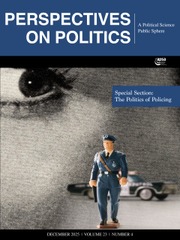I would like to thank Timothy Scarnecchia for his generous review—it means a lot to read such kind remarks from someone whose work I admire. On to the questions: my interviewees relayed that, after the war, a spirit of “forgive and forget” prevailed. It would likely be a stretch to say that there was full-scale reconciliation, but people in the rural areas—where most of the Rhodesian African Rifles (RAR) hailed from—were tired of the long conflict.
Postwar stigma was not so much of an issue for RAR veterans. Firstly, even though it had been a particularly combat-effective unit, its use of violence was seen as military and “professional.” This was in stark contrast to other units, like the Security Force Auxiliaries, which had used violence wantonly and for politicised purposes. Mugabe himself drew a clear, publicly announced distinction between “acceptable” ex-Rhodesian units, which were retained and then integrated into the Zimbabwe National Army (ZNA), and others such as the auxiliaries, which he summarily disbanded.
Secondly, within the nascent ZNA, my interviewees said, a form of militarised reconciliation between, on the one hand, so-called “formers”—(ex-Rhodesian Army personnel in the ZNA) – and, on the other, ex-members of the military wings of the liberation movements, forged through recollections of shared military experience and suffering, was particularly strong. Perhaps most importantly of all, the “formers” were seen by Mugabe, and ministers including current President Emmerson Mnangagwa, as effective, professional, and nonpartisan. They were keen to retain them as a counterbalance to the Soviet-equipped conventional army garrisoned across the Zambezi, loyal to Joshua Nkomo, which Mugabe feared could be used to seize power. There is no evidence that Nkomo sought this option. But it seems that Mugabe viewed the threat as real, and his faith in the “formers” was buttressed by their key role in suppressing antigovernment mutinies and infighting at Entumbane in 1980 and 1981.
While it was likely for these instrumental reasons, Mugabe’s government treated its erstwhile enemies—the “formers”—rather well, especially compared to other post-decolonial war countries, e.g. Algeria and Guinea-Bissau, where thousands of ex-colonial troops were massacred and tortured. Very few “formers” left Zimbabwe—certainly very few ex-RAR. This was because they were welcome to continue their careers in the ZNA, which they were keen to do as professional soldiers. This also created opportunities for promotion, although there was a “glass ceiling” rank of Colonel.
My interviewees recalled that the “professional” ZNA units—of which they were part—were conspicuously kept separate from 5 Brigade and other units involved in the Gukurahundi massacres in Matabeleland and Midlands from 1983 to 1987. They had a good relationship with BMATT and thought it an effective and beneficial operation. Many “formers” did serve in Mozambique, partly because they served in the ZNA’s best units, which were deployed there. All my interviewees had retired by the First Congo War of the late 1990s.
Owing to the word limit I cannot add further detail here but—at the risk of self-promotion—I subsequently wrote a journal article on this topic that discusses the very interesting history of the “formers” in the ZNA (M.T. Howard, “Allies of Expedience: The Retention of Black Rhodesian Soldiers in the Zimbabwe National Army”, Journal of Southern African Studies, 48(1), 2022).


